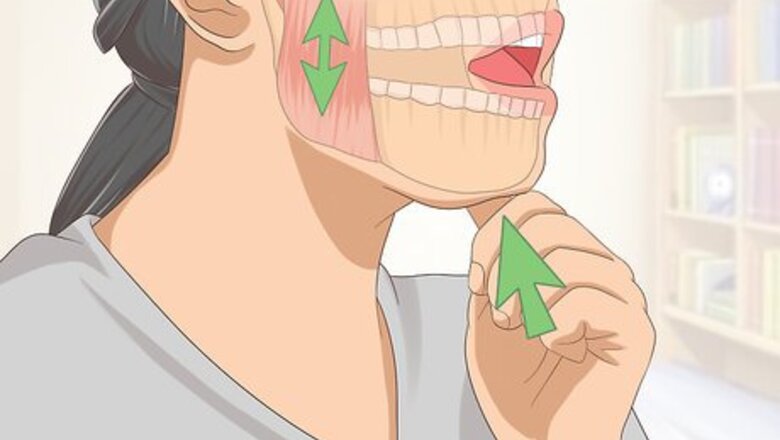
views
X
Research source
- Press 2 fingers gently under your chin and open and close your mouth to strengthen your jaw.
- Keep your teeth slightly apart when your mouth is at rest to relax your jaw.
- Put a chopstick between your teeth and move your teeth forward, back, and side to side to increase jaw mobility.
Strengthening Your Jaw

Apply resistance while opening your mouth. Strengthening your jaw will help alleviate TMD symptoms. Place two fingers under your chin and press gently, applying a little resistance, while opening your mouth. Perform this exercise six times per session, six sessions per day. Never persevere through any exercise that is painful or uncomfortable, especially when applying resistance. If your pain is acute, seek advice from your dentist or doctor.
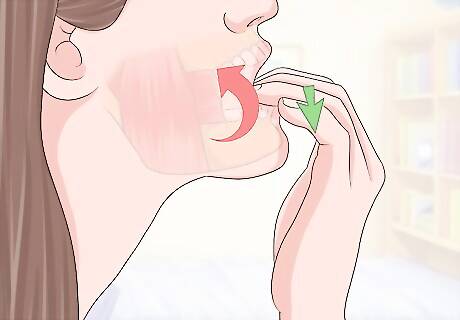
Apply resistance while closing your mouth. Open your mouth, and place two fingers under your bottom lip. Press gently, applying a little downward resistance, while closing your mouth. This will help strengthen your jaw muscles to ease your TMD. Perform this exercise six times per session, six sessions per day.

Perform chin tucks. With good posture, pull your chin straight back towards your chest, as if trying to make a double chin. Hold this chin tucked position for three seconds. This helps build the muscles surrounding your TMJ, taking some pressure off the joint. Repeat this exercise 10 times per day.
Relaxing Your Jaw
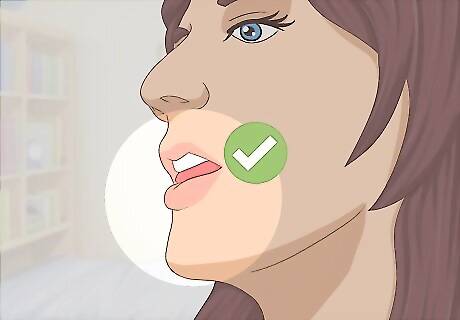
Keep your teeth slightly apart as often as you can. This will relieve the pressure on your jaw. Put your tongue between your teeth to control clenching or grinding during the day. As you go off to sleep try to consciously relax your jaw and don't clench your teeth shut. Ask your dentist about wearing a mouth guard as well.

Open and close your jaw. Hold your tongue on the roof of your mouth as you slowly open and close your jaw. Relaxing the jaw will release tension and is a necessary part of any routine that also involves strength training. Place your tongue on the roof of your mouth just behind your front teeth. Drop your jaw, allowing the muscles to relax. No need to hold this open position, simply repeat this exercise six times per session, six sessions a day.
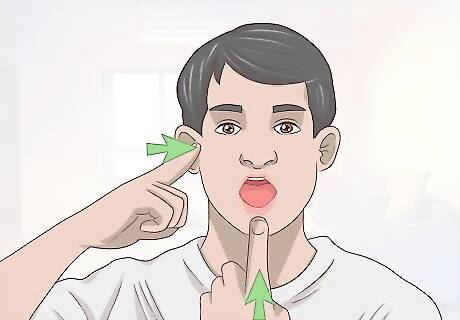
Try “goldfish exercises.” While goldfish aren’t stretching their jaws when they mouth, so-called goldfish exercises can release tightness in your TMJ. Place two fingers on your TMJ joint (you can localize it by where you feel the most discomfort at the hinge of your jaw near your ear.) Then, place one finger from your other hand on your chin. Drop your mouth open, while applying light pressure against the TMJ. Repeat this exercise six times per session, six sessions per day. Don’t apply resistance to your chin when you open your mouth. This exercise is to relax the jaw, not strengthen.
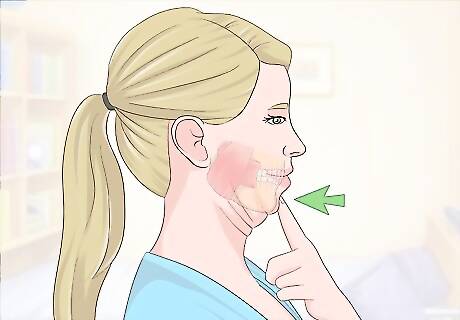
Try chin tucks. You can also use chin tucks to relax your jaw. With your shoulders back and chest up, pull your chin back creating a “double chin” and hold for three seconds. Then, release and repeat 10 times.
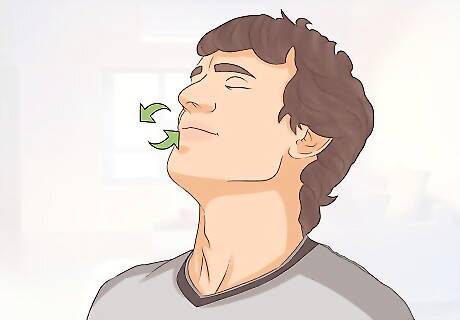
Breathe to release tension. Stress can cause you to clench your jaw, which can in turn aggravate TMD. Practice breathing in slowly through your nose for five seconds, while releasing the tension in your jaw completely. When you breathe out, also for five seconds, try to relax your jaw even further, really concentrating on slackening each muscle you use to chew. You can perform this exercise as often as you like.
Increasing Jaw Mobility
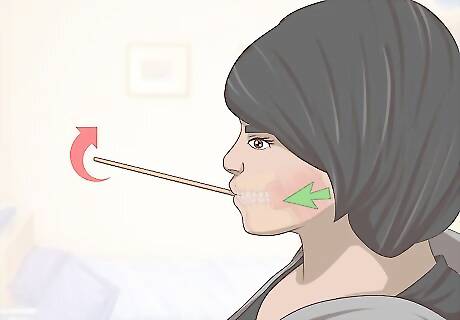
Place an item between your teeth to exercise your jaw with a forward motion. Place an item of 1/4-1/2 inch or 1/2-1 1/3 cm thickness, such as a tongue depressor or a chopstick, between your top and bottom teeth. Orient the object such that the length of it is sticking out in front of you, rather than out of the sides of your mouth. Now, shift your bottom jaw forward to try to point the object towards the ceiling. When you master one object comfortably, gradually increase the thickness to give you greater range of motion. Try to select an object that is made to go in the mouth, such as those indicated above. Other household objects may accidentally chip your teeth during the exercise, if you are not careful. Perform this exercise as needed when you feel you need more mobility in your jaw, such as before a meal.
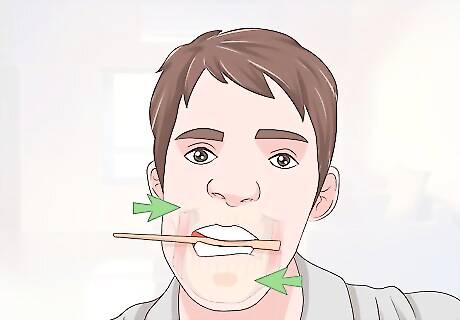
Place an item between your teeth to exercise your jaw side to side. Place your 1/4-1/2 inch or 1/2-1 1/3 cm item between your top and bottom teeth again, but this time, place it horizontally. Move your bottom teeth from side to side rather than up and down. This will help increase your lateral jaw mobility. Perform this exercise as needed in response to pain or when you feel you need more jaw mobility.
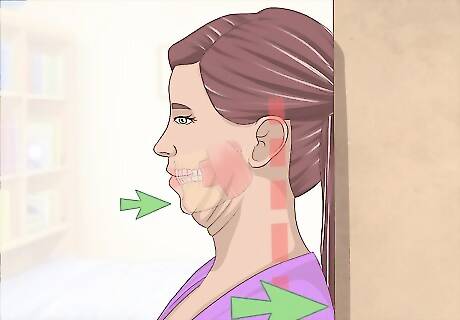
Improve your posture. Many people carry their heads slightly forward when they walk. This brings the spine out of alignment, aggravating TMD. Stand against a wall and tuck your chin, bringing your jaw to your chest, while pressing your shoulder blades together behind your back. This stretches the spine into a more neutral position that can alleviate TMD symptoms and increase jaw mobility.



















Comments
0 comment